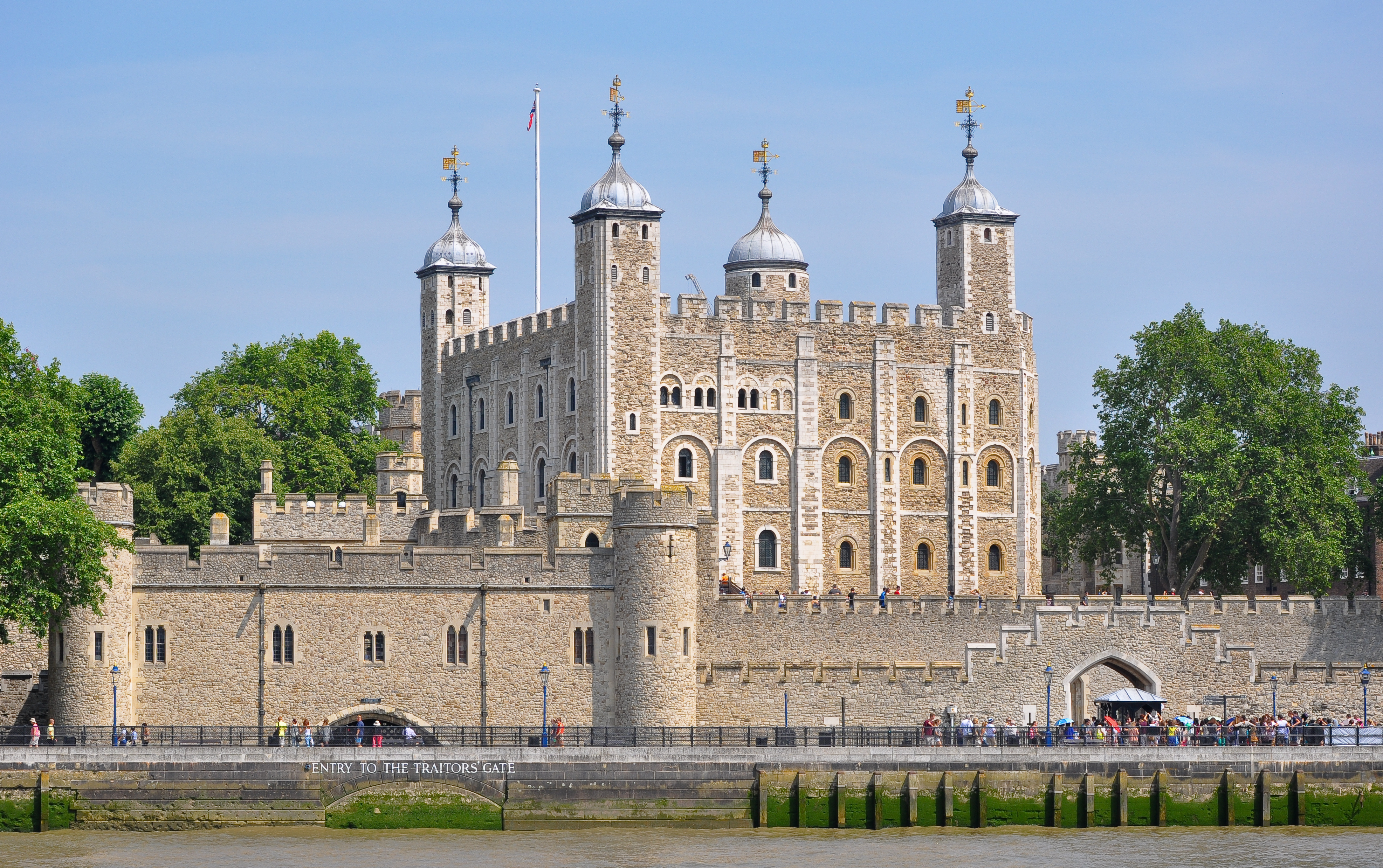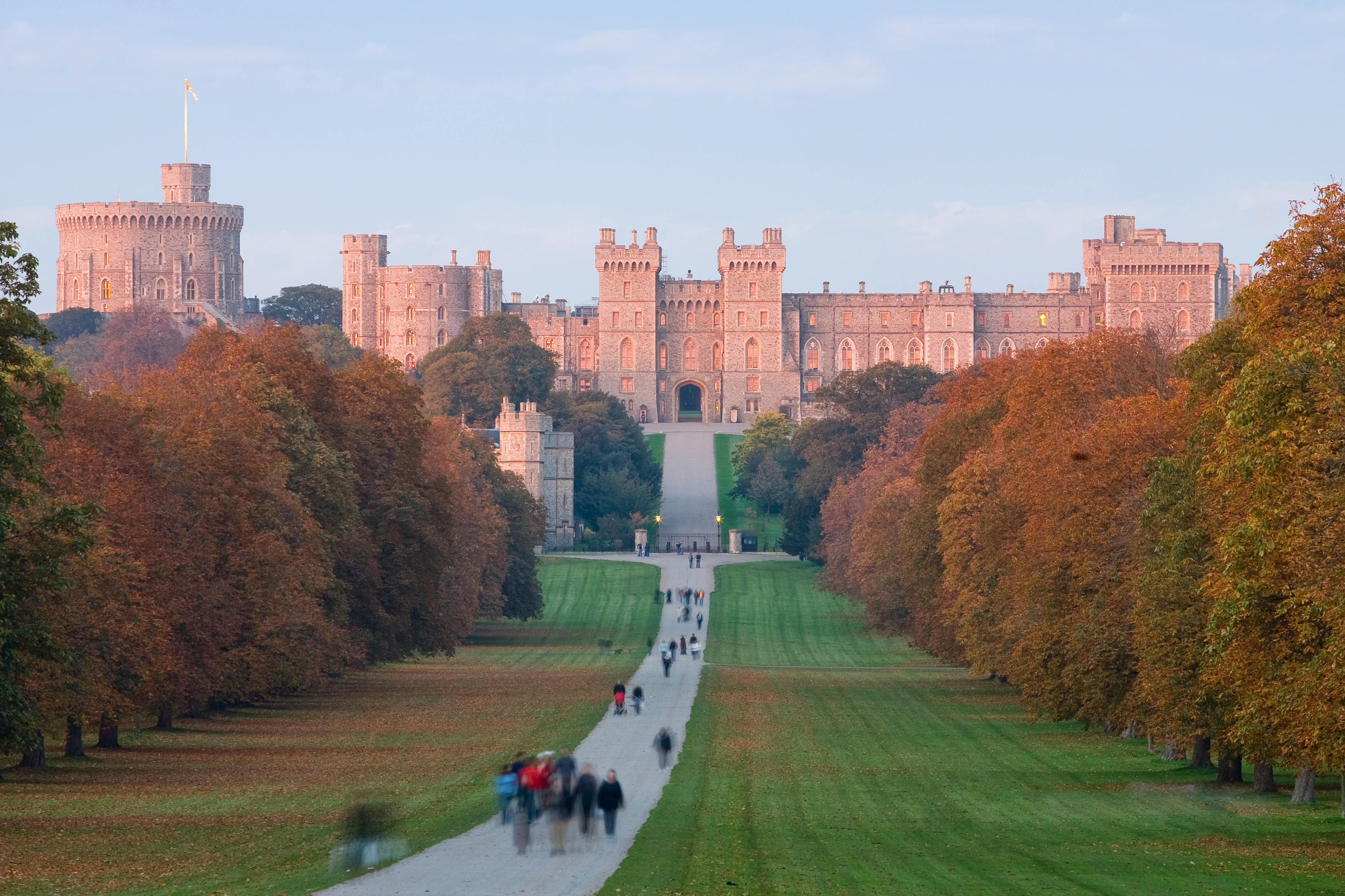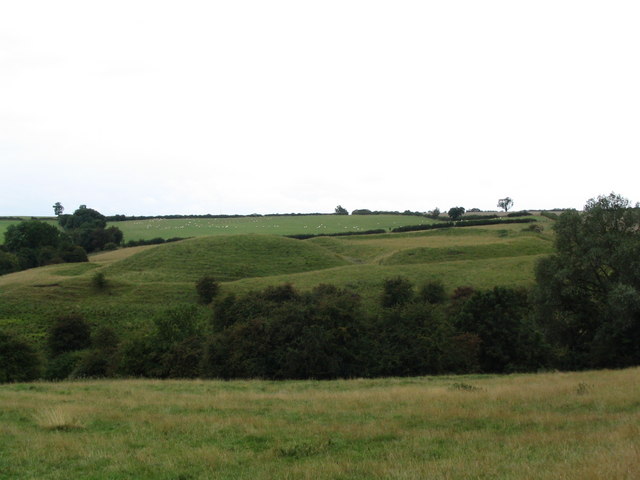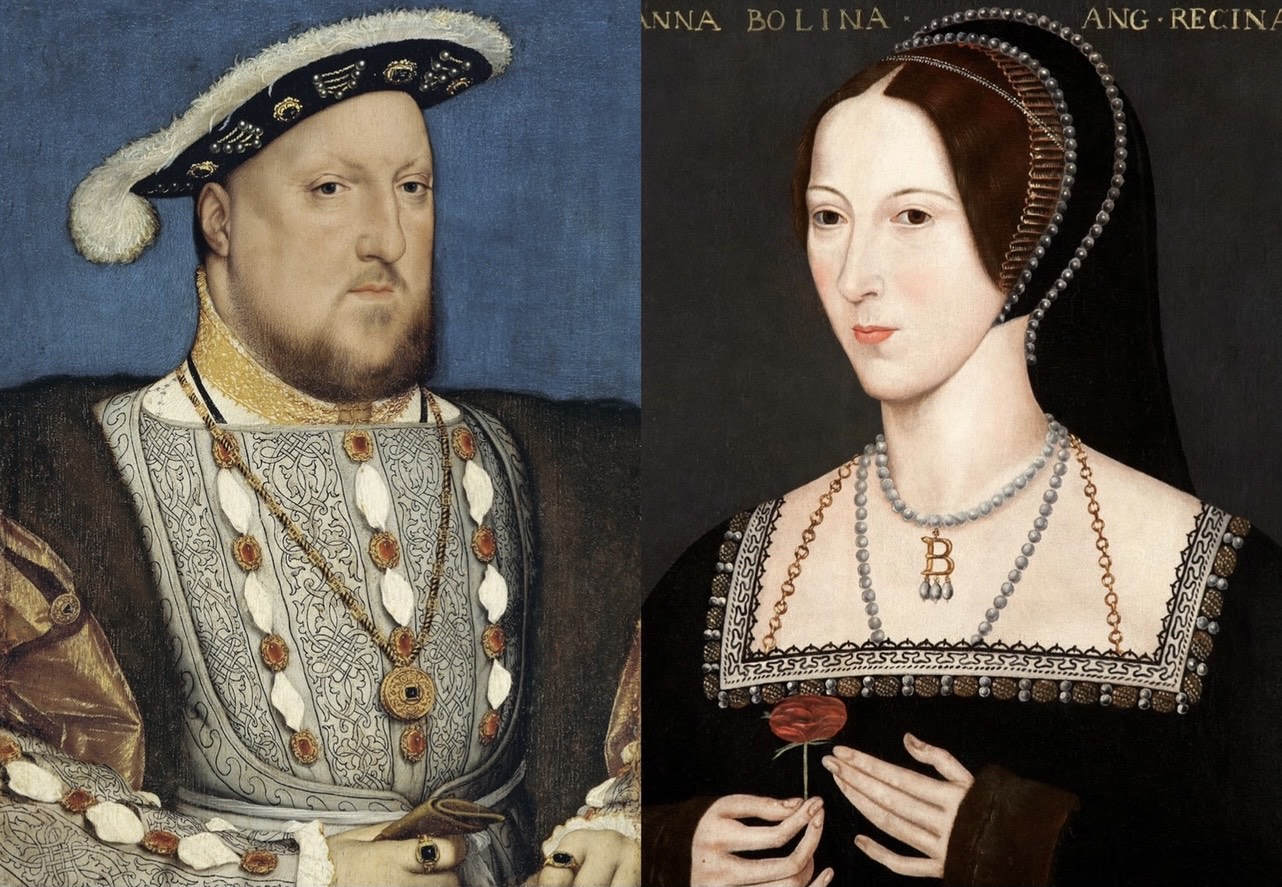|
Tilsworth Castle
Tilsworth Castle refers to both "Warren Knoll Motte" and "Tilsworth Manor", both built in the same general area, located in the civil parish of Tilsworth, in the county of Bedfordshire, England. Warren Knoll Motte The first "Tilsworth Castle", now known as "Warren Knoll Motte", was a pre-11th century motte-and-bailey castle, built prior to the Norman conquest of England, Norman Invasion in 1066. Originally a Anglo-Saxons, Saxon stronghold, it was held by Levric, son of Osmund. It was a timber castle, and believed to have had outer fortifications to the east and north. Mentioned in the Domesday Book of 1086 as "Tilsworth Manor", it was at that time held by William Peverel. By the middle of the 13th century, the castle had passed into the Morteyn family, and was held by seven members of that family before passing, in 1362, into the hands of a Morteyn cousin, Richard Chamberlain. The manor was thus in the Chamberlain family, passing to Richard's son Richard (d. 24 August 1396), and ... [...More Info...] [...Related Items...] OR: [Wikipedia] [Google] [Baidu] |
Tilsworth
Tilsworth is a small village and civil parish in Bedfordshire. It lies to the north west of Dunstable, and the Roman Watling Street ( A5) forms the north east boundary of the parish of 1,200 acres (4.8 km2). The village lies on the gault clay, where springs well up just south of a gentle gravelly ridge. A large proportion of the area is still farmland. The Domesday Book calls the place "Pileworde" because of a misunderstanding of the symbol for "th", and the name probably means "Thyfel's homestead". A further alternative spelling is "Tyllesworth", in a legal record, dated 1470, mentioning Thomas Carter, a husbandman of the village. Stanbridge, a larger village, is a close neighbour to the west and some organisations, such as the Women's Institute, are combined. The medieval All Saints' Church, built of Totternhoe stone, stands in a prominent position on the hillside, and can be seen from a distance when floodlit at night.B. B. West, "Bedfordshire sketch-b ... [...More Info...] [...Related Items...] OR: [Wikipedia] [Google] [Baidu] |
Moat
A moat is a deep, broad ditch, either dry or filled with water, that is dug and surrounds a castle, fortification, building or town, historically to provide it with a preliminary line of defence. In some places moats evolved into more extensive water defences, including natural or artificial lakes, dams and sluices. In older fortifications, such as hillforts, they are usually referred to simply as ditches, although the function is similar. In later periods, moats or water defences may be largely ornamental. They could also act as a sewer. Historical use Ancient Some of the earliest evidence of moats has been uncovered around ancient Egyptian castles. One example is at Buhen, a castle excavated in Nubia. Other evidence of ancient moats is found in the ruins of Babylon, and in reliefs from ancient Egypt, Assyria, and other cultures in the region. Evidence of early moats around settlements has been discovered in many archaeological sites throughout Southeast Asia, including ... [...More Info...] [...Related Items...] OR: [Wikipedia] [Google] [Baidu] |
Castles In Bedfordshire
A castle is a type of fortified structure built during the Middle Ages predominantly by the nobility or royalty and by military orders. Scholars debate the scope of the word ''castle'', but usually consider it to be the private fortified residence of a lord or noble. This is distinct from a palace, which is not fortified; from a fortress, which was not always a residence for royalty or nobility; from a ''pleasance'' which was a walled-in residence for nobility, but not adequately fortified; and from a fortified settlement, which was a public defence – though there are many similarities among these types of construction. Use of the term has varied over time and has also been applied to structures such as hill forts and 19th-20th century homes built to resemble castles. Over the approximately 900 years when genuine castles were built, they took on a great many forms with many different features, although some, such as curtain walls, arrowslits, and portcullises, were ... [...More Info...] [...Related Items...] OR: [Wikipedia] [Google] [Baidu] |
List Of Castles In England
This list of castles in England is not a list of every building and site that has "castle" as part of its name, nor does it list only buildings that conform to a strict definition of a castle as a medieval fortified residence. It is not a list of every castle ever built in England, many of which have vanished without trace, but is primarily a list of buildings and remains that have survived. In almost every case the buildings that survive are either ruined, or have been altered over the centuries. For several reasons, whether a given site is that of a medieval castle has not been taken to be a sufficient criterion for determining whether or not that site should be included in the list. Castles that have vanished or whose remains are barely visible are not listed, except for some important or well-known buildings and sites. Fortifications from before the medieval period are not listed, nor are architectural Folly, follies. In other respects it is difficult to identify clear an ... [...More Info...] [...Related Items...] OR: [Wikipedia] [Google] [Baidu] |
Castles In Great Britain And Ireland
Castles have played an important military, economic and social role in Great Britain and Ireland since their introduction following the Norman invasion of England in 1066. Although a small number of castles had been built in England in the 1050s, the Normans began to build motte and bailey and ringwork castles in large numbers to control their newly occupied territories in England and the Welsh Marches. During the 12th century the Normans began to build more castles in stone – with characteristic square keep – that played both military and political roles. Royal castles were used to control key towns and the economically important forests, while baronial castles were used by the Norman lords to control their widespread estates. David I invited Anglo-Norman lords into Scotland in the early 12th century to help him colonise and control areas of his kingdom such as Galloway; the new lords brought castle technologies with them and wooden castles began to be established over th ... [...More Info...] [...Related Items...] OR: [Wikipedia] [Google] [Baidu] |
Fête
In Britain and some of its former colonies, fêtes are traditional public festivals, held outdoors and organised to raise funds for a charity. They typically include entertainment and the sale of goods and refreshments. Village fêtes Village fêtes are common in Britain. These are usually outdoor shows held on village greens or recreation grounds with a variety of activities. They are organised by an ad hoc committee of volunteers from organisations like religious groups or residents' associations. Fêtes can also be seen in former British colonies. In Australia, fêtes are often held yearly by schools and sometimes churches to raise funds. Attractions seen at village fêtes include tombolas, raffles, coconut shies, bat a rat stalls, white elephant stalls, cakes, and home produce such as jams and pickles. Competitive baking, such as making Victoria sponge cake, is part of the classic British fête. Filmed in bunting-draped marquees in scenic gardens, '' The Great British ... [...More Info...] [...Related Items...] OR: [Wikipedia] [Google] [Baidu] |
Gatehouse
A gatehouse is a type of fortified gateway, an entry control point building, enclosing or accompanying a gateway for a town, religious house, castle, manor house, or other fortification building of importance. Gatehouses are typically the most heavily armed section of a fortification, to compensate for being structurally the weakest and the most probable attack point by an enemy. There are numerous surviving examples in France, Austria, Germany, England and Japan. History Gatehouses made their first appearance in the early antiquity when it became necessary to protect the main entrance to a castle or town. Over time, they evolved into very complicated structures with many lines of defence. Strongly fortified gatehouses would normally include a drawbridge, one or more portcullises, machicolations, arrow slit, arrow loops and possibly even murder-holes where stones would be dropped on attackers. In some castles, the gatehouse was so strongly fortified it took on the function of a ... [...More Info...] [...Related Items...] OR: [Wikipedia] [Google] [Baidu] |
Gregory Page-Turner
Sir Gregory Page-Turner, 3rd Baronet (16 February 1748 – 4 January 1805) was a wealthy landowner and politician in late 18th century England, serving as Member of Parliament (MP) for Thirsk for 21 years. Gregory Turner ("Page" was added later) was the eldest son of Sir Edward Turner, 2nd Baronet of Ambrosden near Bicester in Oxfordshire. Gregory succeeded him to become the third Turner baronet on 31 October 1766. Pompeo Batoni painted Sir Gregory's portrait in about 1768. In 1771, Sir Gregory sold the manor of Wendlebury, Oxfordshire, which his father had bought in 1764, to his father's steward John Pardoe. In 1775 he inherited substantial estates in northwest Kent (today part of southeast London) from his great-uncle Sir Gregory Page, and added "Page" to his surname. These included a mansion and of estates at Wricklemarsh (today part of Blackheath), which were sold in 1783 for £22,000 to John Cator. That year he served as High Sheriff of Oxfordshire and then ... [...More Info...] [...Related Items...] OR: [Wikipedia] [Google] [Baidu] |
Forgery
Forgery is a white-collar crime that generally refers to the false making or material alteration of a legal instrument with the specific intent to defraud anyone (other than themself). Tampering with a certain legal instrument may be forbidden by law in some jurisdictions but such an offense is not related to forgery unless the tampered legal instrument was actually used in the course of the crime to defraud another person or entity. Copies, studio replicas, and reproductions are not considered forgeries, though they may later become forgeries through knowing and willful misrepresentations. Forging money or currency is more often called counterfeiting. But consumer goods may also be ''counterfeits'' if they are not manufactured or produced by the designated manufacturer or producer given on the label or flagged by the trademark symbol. When the object forged is a record or document it is often called a false document. This usage of "forgery" does not derive from metalw ... [...More Info...] [...Related Items...] OR: [Wikipedia] [Google] [Baidu] |
Elizabeth I Of England
Elizabeth I (7 September 153324 March 1603) was Queen of England and Ireland from 17 November 1558 until her death in 1603. Elizabeth was the last of the five House of Tudor monarchs and is sometimes referred to as the "Virgin Queen". Elizabeth was the daughter of Henry VIII and Anne Boleyn, his second wife, who was executed when Elizabeth was two years old. Anne's marriage to Henry was annulled, and Elizabeth was for a time declared illegitimate. Her half-brother Edward VI ruled until his death in 1553, bequeathing the crown to Lady Jane Grey and ignoring the claims of his two half-sisters, the Catholic Mary and the younger Elizabeth, in spite of statute law to the contrary. Edward's will was set aside and Mary became queen, deposing Lady Jane Grey. During Mary's reign, Elizabeth was imprisoned for nearly a year on suspicion of supporting Protestant rebels. Upon her half-sister's death in 1558, Elizabeth succeeded to the throne and set out to rule by good counsel. S ... [...More Info...] [...Related Items...] OR: [Wikipedia] [Google] [Baidu] |
Tower Of London
The Tower of London, officially His Majesty's Royal Palace and Fortress of the Tower of London, is a historic castle on the north bank of the River Thames in central London. It lies within the London Borough of Tower Hamlets, which is separated from the eastern edge of the square mile of the City of London by the open space known as Tower Hill. It was founded towards the end of 1066 as part of the Norman Conquest. The White Tower, which gives the entire castle its name, was built by William the Conqueror in 1078 and was a resented symbol of oppression, inflicted upon London by the new Norman ruling class. The castle was also used as a prison from 1100 ( Ranulf Flambard) until 1952 ( Kray twins), although that was not its primary purpose. A grand palace early in its history, it served as a royal residence. As a whole, the Tower is a complex of several buildings set within two concentric rings of defensive walls and a moat. There were several phases of expansion, mainly un ... [...More Info...] [...Related Items...] OR: [Wikipedia] [Google] [Baidu] |
Demolished
Demolition (also known as razing, cartage, and wrecking) is the science and engineering in safely and efficiently tearing down of buildings and other artificial structures. Demolition contrasts with deconstruction, which involves taking a building apart while carefully preserving valuable elements for reuse purposes. For small buildings, such as houses, that are only two or three stories high, demolition is a rather simple process. The building is pulled down either manually or mechanically using large hydraulic equipment: elevated work platforms, cranes, excavators or bulldozers. Larger buildings may require the use of a wrecking ball, a heavy weight on a cable that is swung by a crane into the side of the buildings. Wrecking balls are especially effective against masonry, but are less easily controlled and often less efficient than other methods. Newer methods may use rotational hydraulic shears and silenced rock-breakers attached to excavators to cut or break through woo ... [...More Info...] [...Related Items...] OR: [Wikipedia] [Google] [Baidu] |





.jpg)



